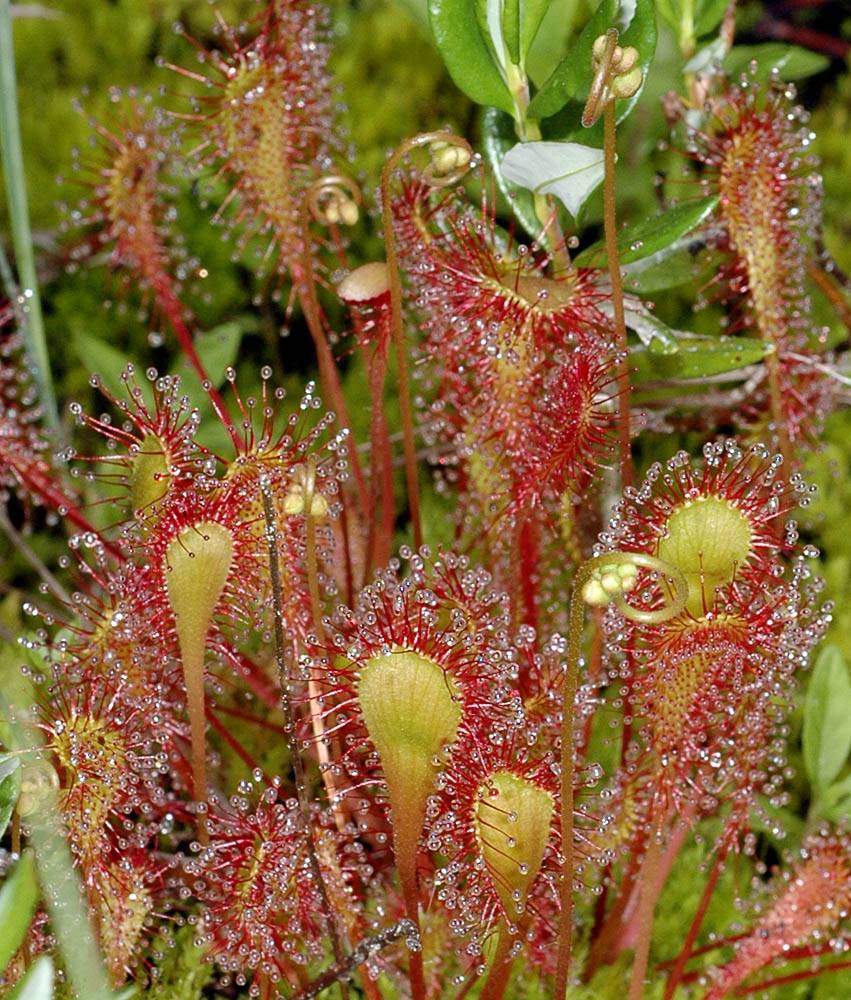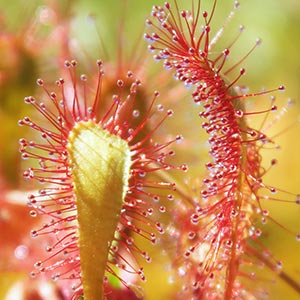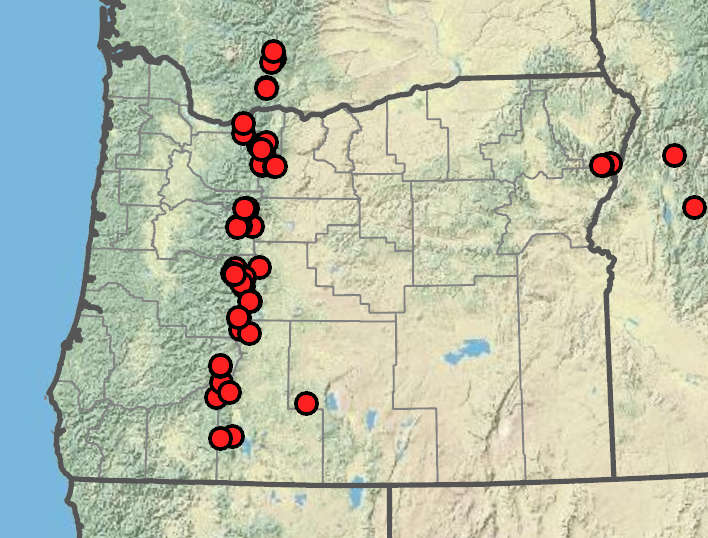Drosera
Drosera anglica
sundew
English sundew, great sundew, line-leaved sundew
adaxial surfaces and margins covered in gland-tipped hairs; long-petiolate.
ascending to erect, narrowly oblong-oblanceolate to spatulate-oblong or cuneate-obovate, 10–30(50) × (2)3–5(7) mm, tapering gradually to petioles;
petioles 1.5–8 cm, glabrous or sparsely glandular-hairy.
6–18 cm.
usually simple but may be forked.
usually 1, sometimes 2, 2–7-flowered.
white to pink.
calyces (4)5–6 mm, connate about 33% of length;
petals 8–12 mm, white;
styles usually bifid ~67% from tips.
usually with a loose seed coat that often forms a jointed to flattened wing at one or both ends.
1–1.4 mm; black;
seed coats longitudinally striate-netted, prolonged but not flattened at each end.
=40.
Drosera
Drosera anglica
Nearly worldwide. ~90 species; 2 species treated in Flora.
The flowers of many species, including ours, close at night and on overcast days.
Swamps and bogs, especially in sphagnum. Flowering Jul–Sep. 800–1900 m. BW, Casc, ECas. CA, ID, WA; north to AK, east to Newfoundland and ME; Asia, Europe. Native.
Drosera anglica has been known to hybridize with D. rotundifolia to form the named hybrid “species” D. × obovata, a sterile triploid. These hybrids are intermediate in nearly all morphological characters.
Tamra Prior
- Local floras:
BC,
CA,
OR,
WA
- Local Web sites:
CalFlora,
CalPhotos,
Flora NW,
PNW Herbaria
WildflowerSearch
iNaturalist (observations)
USDA Plants Database
- LBJ Wildflower Center
- SEINet
- Plants of the World Online
- Encyclopedia of Life
- Wikipedia
- Google Image Search




